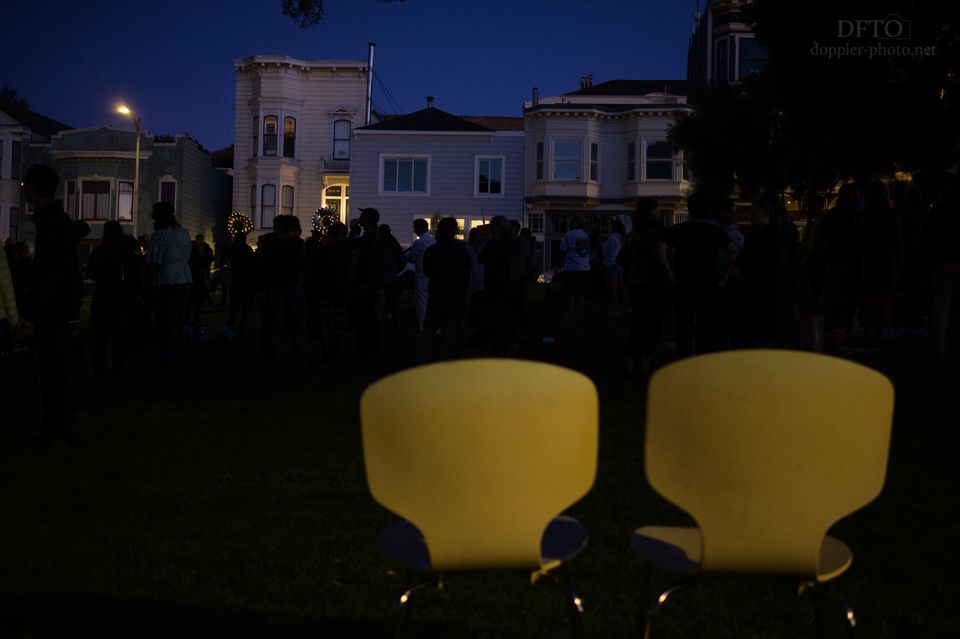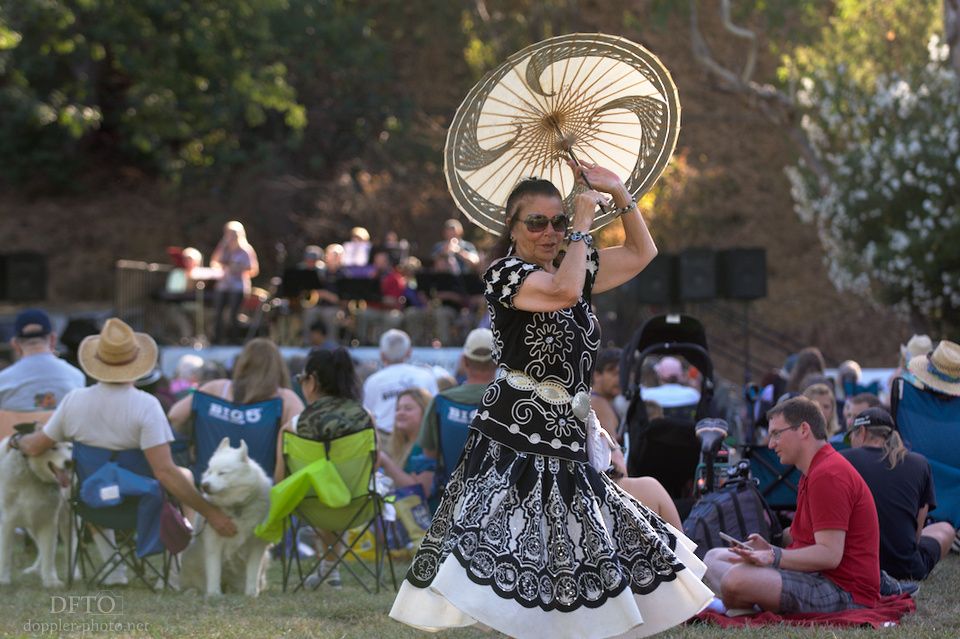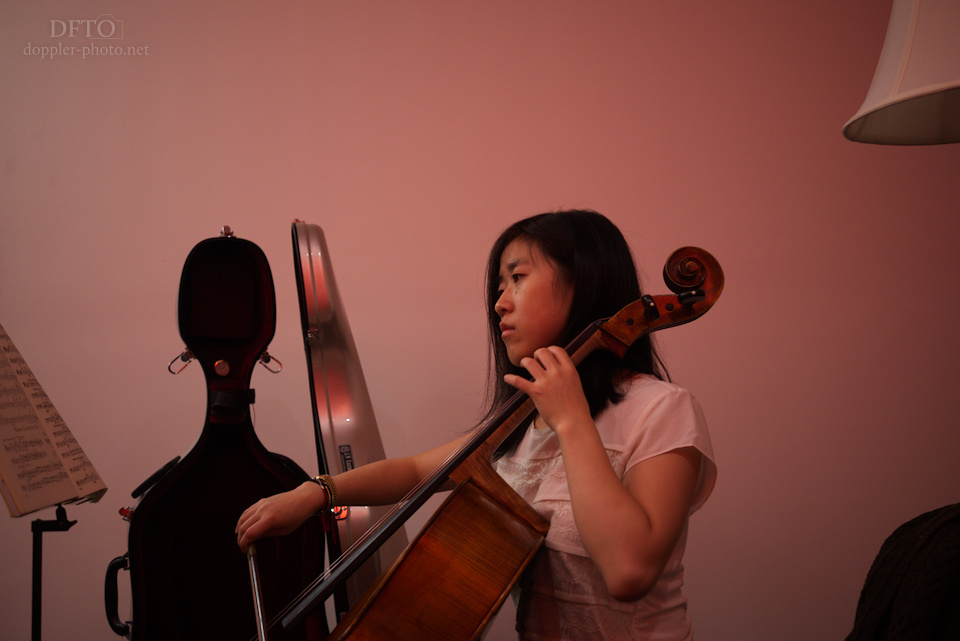
"Can you tell a story without moving?" That's the essence of a photography exercise I first went through about 13 years ago, during one of the only two photography classes I've ever taken. More recently, I was spending time with a friend while she practiced the cello, and I decided to give that exercise another go.
The fundamental goal of the exercise isn't really to capture distinct perspectives of the scene (although that is a good outcome). But rather, the goal is to force yourself to "work the scene" — to do the work to discover novel ways of seeing and capturing the scene that might not immediately come to mind. I absolutely adore this opening photo, but I had no idea that this is something that was lurking in the environment when we started. It took me 35 minutes into the 45-minute practice session to find it.
So let's go back to the beginning, and I'll show you some of the directions I explored en route to finding this and other shots during that session. My hope is that it'll give you some ideas and techniques to explore your own scenes, and to find some new perspectives for subjects that might already be familiar.
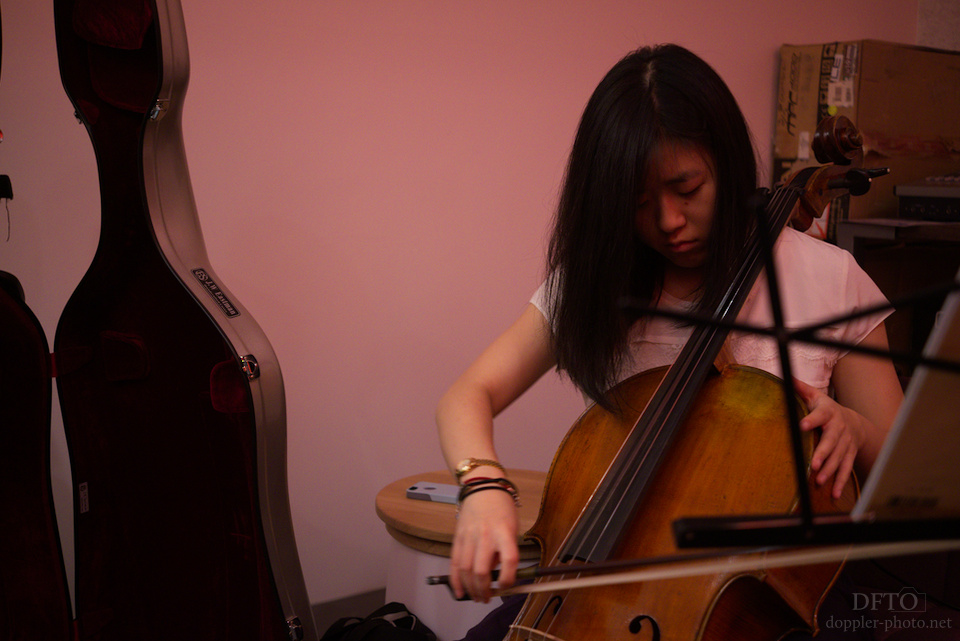
This is where we started. Image number two. In fact, I started off by just watching and listening — especially in tighter quarters like this, it's helpful to let people settle into their routine without feeling immediately overwhelmed or self-conscious because of the presence of a camera. Sometimes, a lot of the process of discovering the images that are hiding in a scene starts with doing the initial work to help the subject feel comfortable being photographed.
That initial period also gave me a chance to just take in what was going on and where to start. What habits does my friend have? How quickly or slowly does she move? What kinds of contrasts exist in the scene?
When I finally pulled out the camera, I started off at my default settings for a scene like this: 1/40s at f/2.8. I set the exposure compensation to what seemed reasonable — the room itself was pretty dark — and auto-ISO picked a number to make the exposure math work.
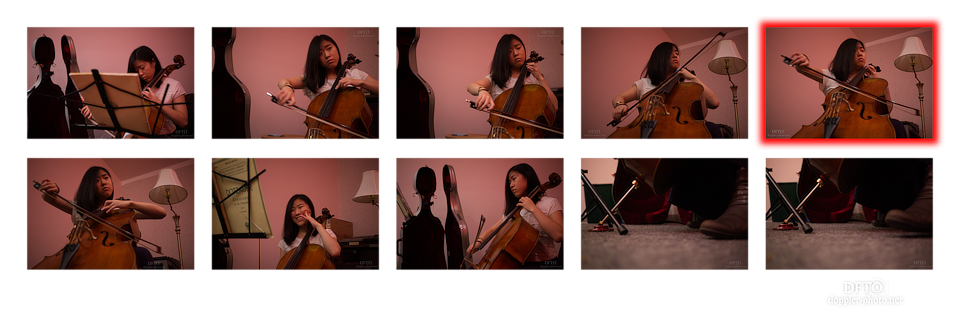

Looking at the first frame, the background was fairly cluttered, and all of the clutter was on the ground. So it was pretty clear that I should move the camera down and shoot upwards. I had decided early on that I wanted all of the images to include the cello as a prominent subject. So I put the camera near the ground, used the tilting LCD so I could see as I pointed it upwards, and took some more frames.
Once I had a decent composition going, I started paying attention to moments. I knew I wanted the bow to be visibly moving, and I wanted the position of the bow to add to the composition. I knew from prior experience that given the speed of her bow hand, the 1/40s shutter speed was going to work for what I wanted there. Once I had this shot in the bag, I took a few others, and then I started to get antsy.
'Cause you see, a lot of how I do photography is anxiety-driven. When I get too comfortable in one position, I start to worry about the shots that I can't see from that angle. That discomfort pushes me to move around and explore, even when I have an angle that is working really well for me in that moment. And experience has demonstrated that generally, if I search hard enough, I'll be able to find a different angle that is worth shooting. It doesn't necessarily need to be better or worse than where I started; it just needs tell a slightly different story than the ones I was able to tell so far.
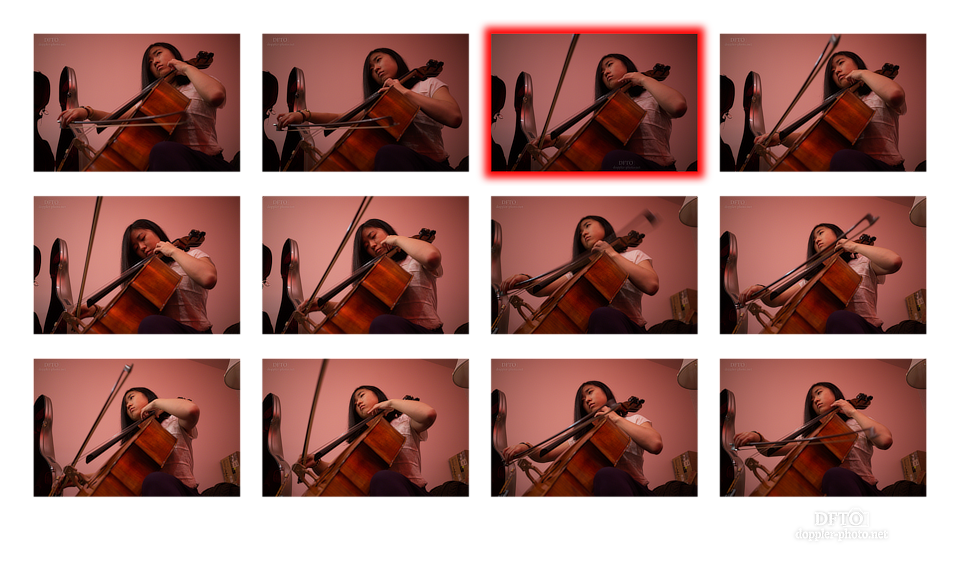
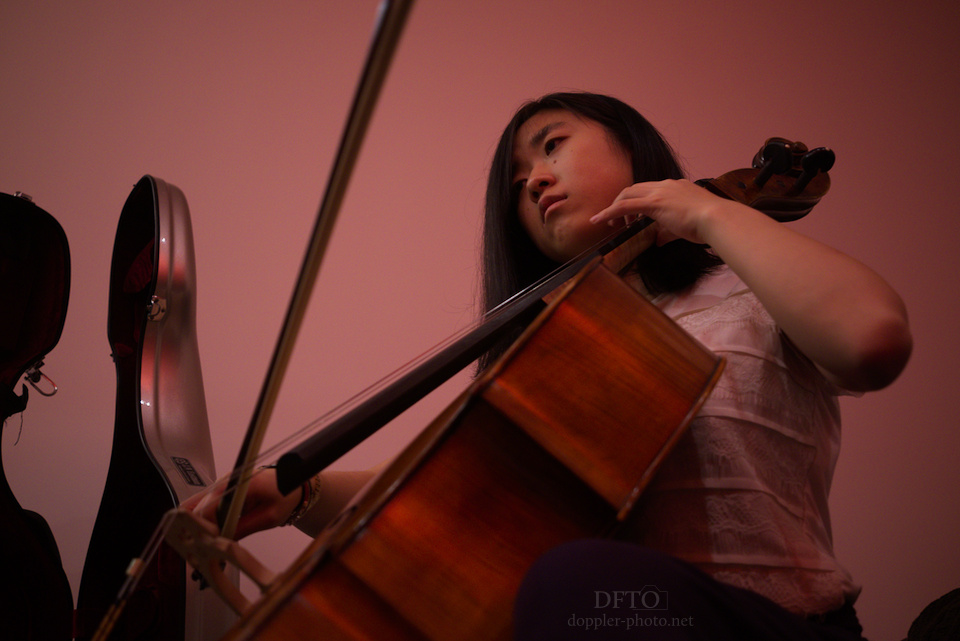
So I moved to the right. I dropped some more clutter from the background (yay!), and I picked up the cello case (yay!), but then I also lost that really cool-looking reading lamp (sads). It was neat to see the point of contact between the bow and the strings, though.
Beyond that, I also took some more time to try to get the bow position to add meaningfully to the image's composition. In that vein, I really like how this particular shot turned out. I feel like the body of the cello creates a very strong diagonal element, the strings and fingerboard create a different very strong diagonal element, and the orientation of the travel case creates a very strong vertical element. The position of the bow bisects the case orientation and the string/fingerboard orientation in a way that I really enjoy.
And at a higher level, you can also see how my exploration is moving me gradually closer to the perspective, composition, and I'm gradually creeping toward the various features of the opening shot.


Next stop, even closer. I traded the travel case for the reading lamp again, and I picked up the background clutter again along the way. Also, even slower. I doubled the exposure time to 1/20s in an attempt to get even more motion blur. But this still ended up looking pretty similar to images I had already shot. It was time to make a bigger change…

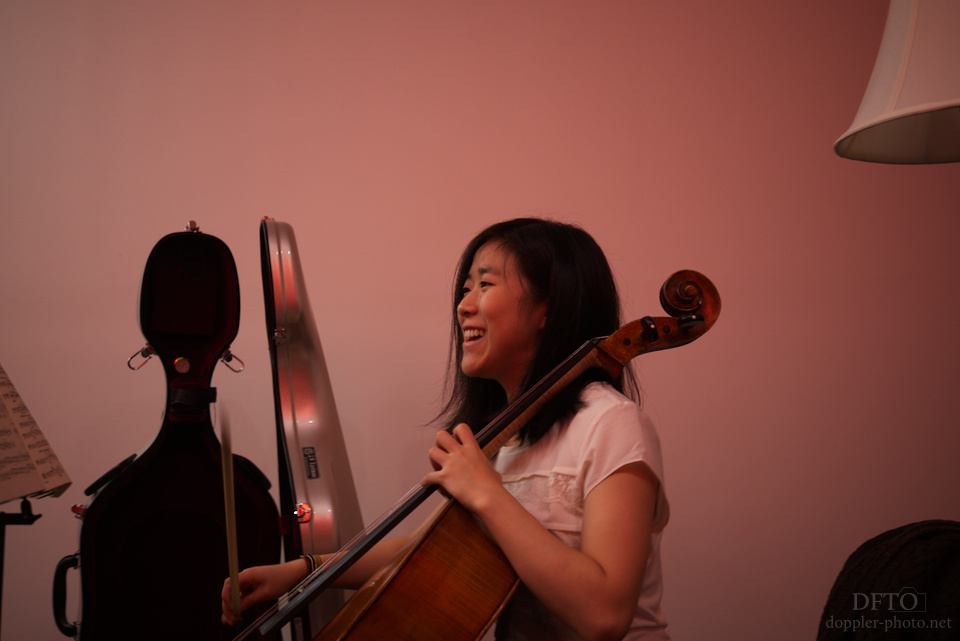
So instead of being as close as possible, I moved far away. I knew what I wanted in the frame (travel case, music stand, reading lamp, cello, and of course, my friend). I knew that I wanted to be able to see her face. And I knew what I didn't want in the frame (the stuff ~5 feet behind her back). Those constraints pointed to one particular place in the room where I had to be. So I went there and magic happened.
Throughout the session, I had tried to spend enough time in each position to see what different moments would play out. But it's important to keep in mind that as my exploration progressed, so did her practice. She had been working up to pieces that were more difficult for her to play, which caused new expressions and reactions that hadn't occurred earlier on. So once I found this perspective, I basically stayed there and let other variables play out.
I also was getting more familiar with how my friend moved her body while playing, so I dropped the shutter speed even further — this was 1/15s. I love to capture contrasts between motion and stillness, and she did a good job of isolating her arm movements from her head and body, even in the midst of a fit of laughter.
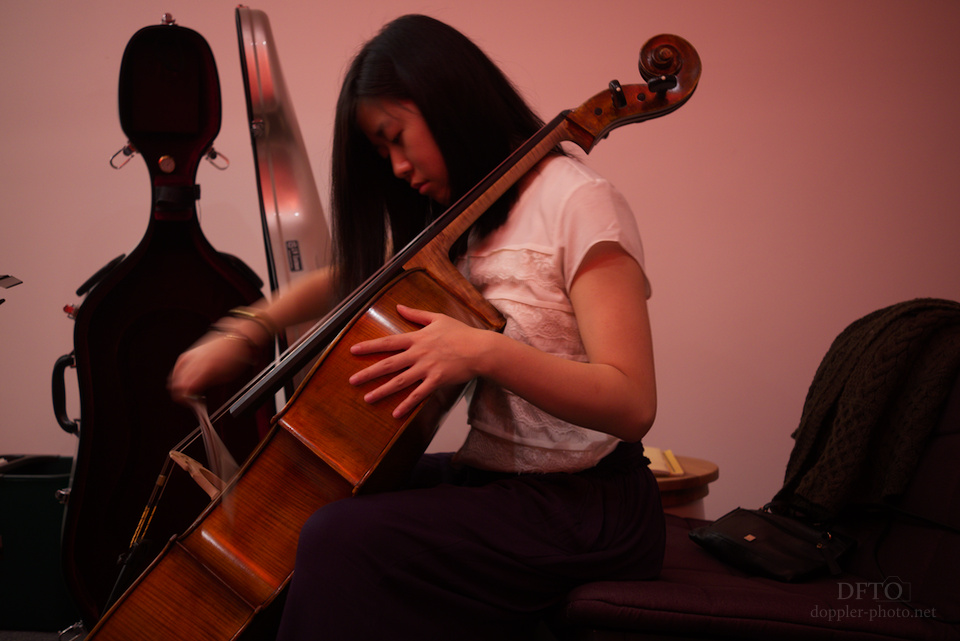
Even slower. 1/10 of a second. I loved the way her hand rested on the body of the cello, so I put the focus there and tried to capture the bow in an interesting movement. I ended up with a shot that further emphasizes the isolation of movement that I had mentioned above.
Beyond that, the posture of her head, and the way that her hair partially enshrouds her face, illustrates a transition from a more alert, cognitive mode of play to something that was more sensory and visceral. As if she had gone from playing notes for correctness, to playing sounds purely for the experience of those sounds.
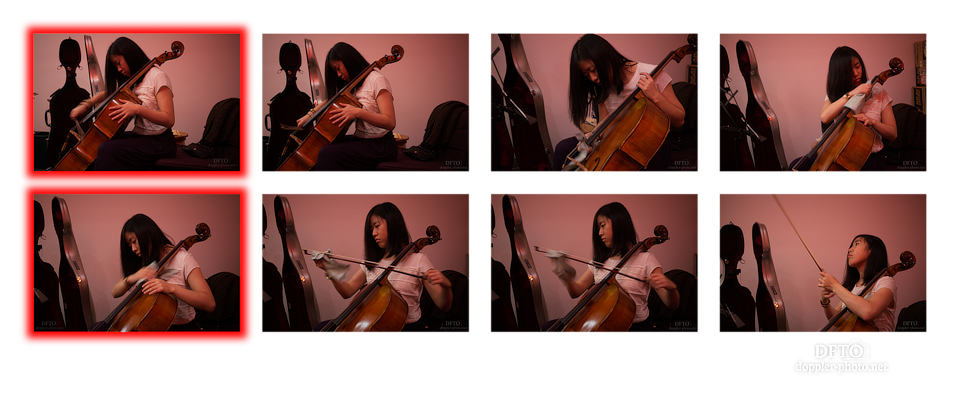
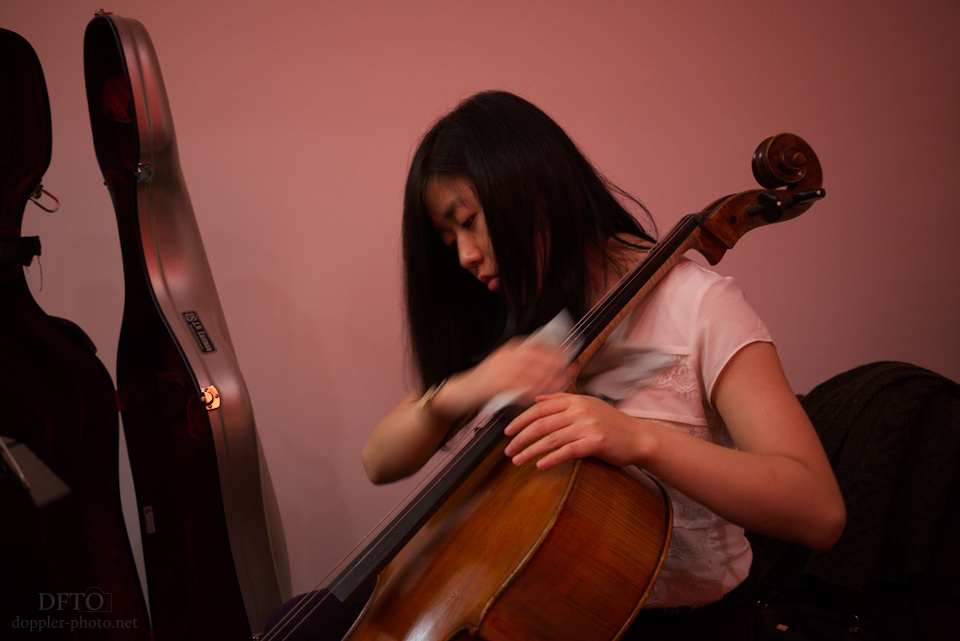
And just like that, our time was up. Back up to 1/30s to capture the vigorous motions as she cleaned the strings and the fingerboard. And then back in the case. Until next time…



